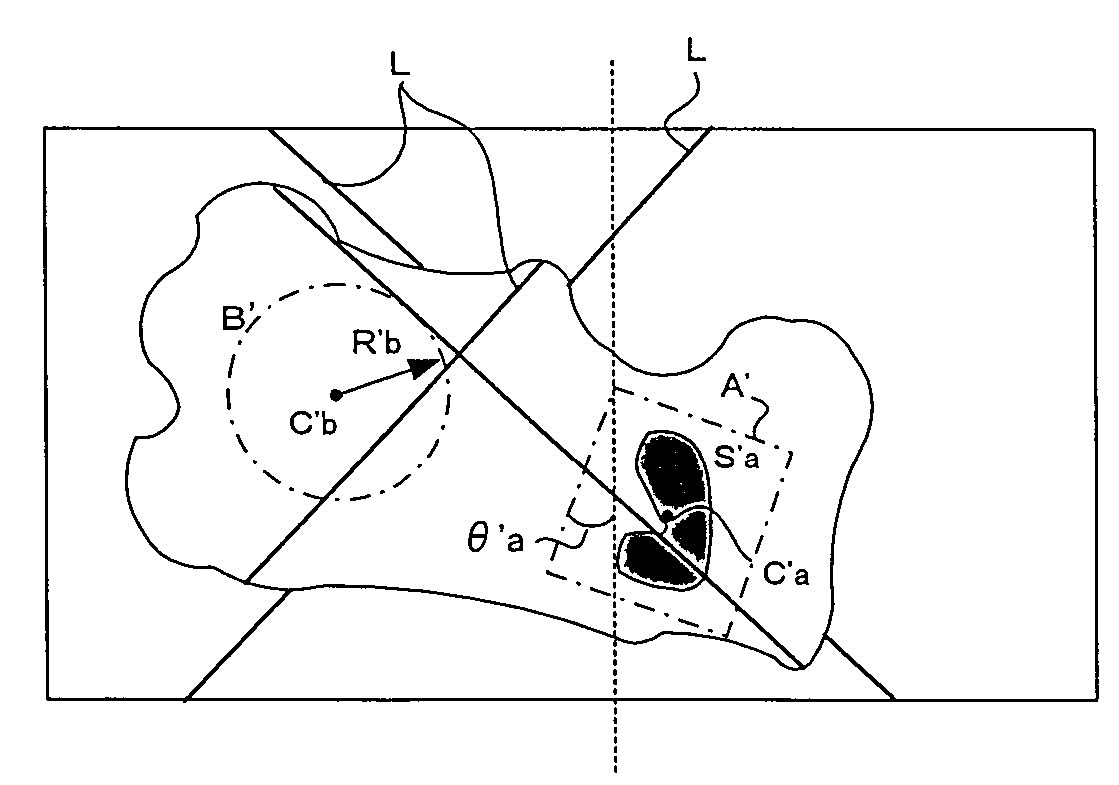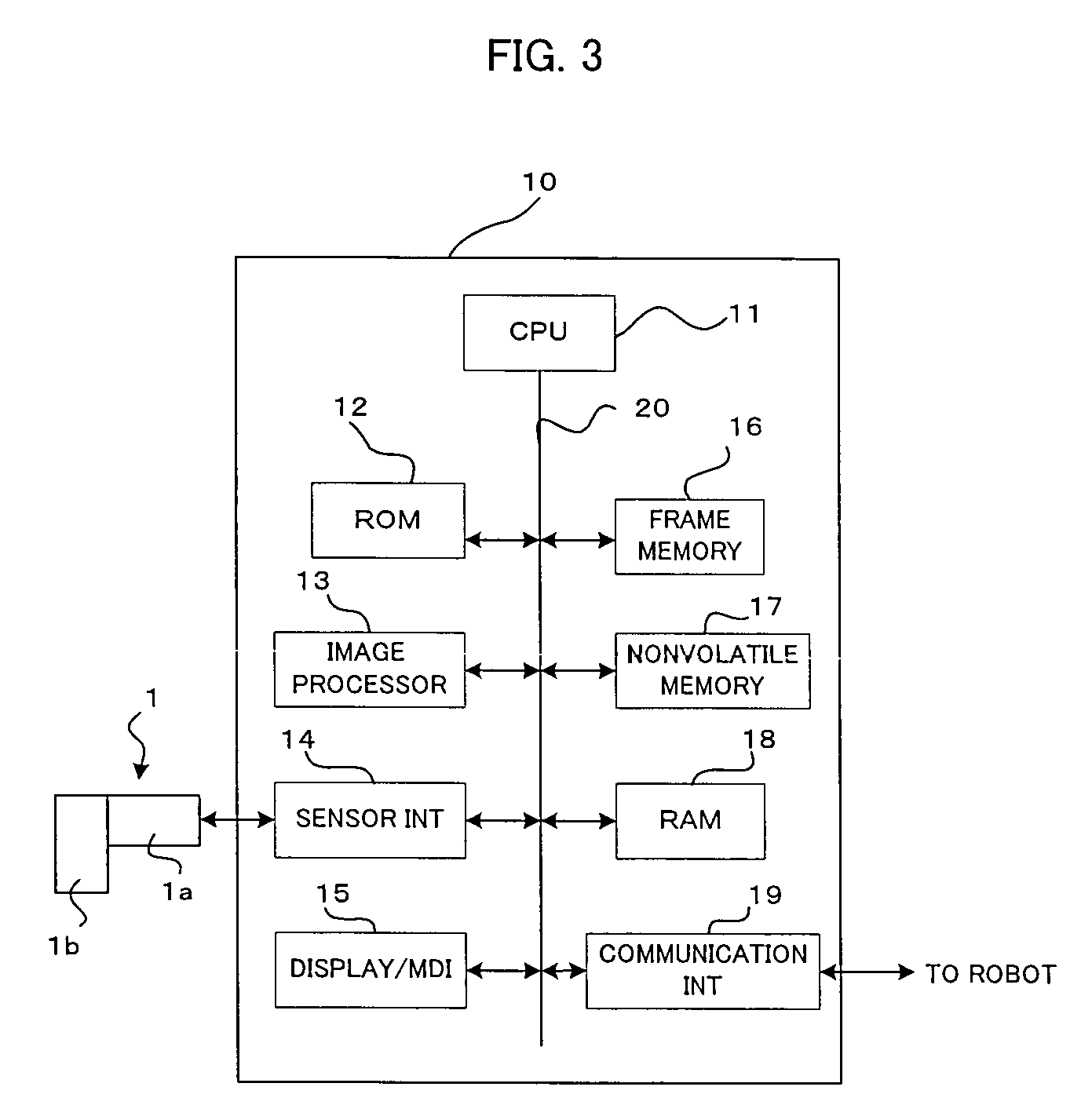Three-dimensional visual sensor
a three-dimensional visual sensor and sensor technology, applied in the field of three-dimensional visual sensors, can solve the problems of not being able to determine which part of the objective workpiece the reference beam is projected on, no three-dimensional visual sensor which can perform automatic adjustment, and obstacles to work automation, etc., to achieve the effect of measuring accurately
- Summary
- Abstract
- Description
- Claims
- Application Information
AI Technical Summary
Benefits of technology
Problems solved by technology
Method used
Image
Examples
first embodiment
[0023]FIGS. 1 and 2 are illustrations for explaining principles of the invention. FIG. 1 shows an image of a reference workpiece captured by a camera, the reference workpiece having the same shape and size as one of objective workpieces which are objects of operation. A region A is set as a region where a characteristic part of the workpiece (i.e. the reference workpiece of the same type as the objective workpieces) has been detected through two-dimensional image processing. A center position Ca (xa, ya), a tilting angle θa and a size Sa of the region A which includes the characteristic part are detected.
[0024]A region B is set as a region which has been determined as a target region of three-dimensional measurement on the captured image. In the present example, the target region B of three-dimensional measurement is a circle in shape. The center position Cb (xa, ya) of the region B, and the radius Rb of the region B which determines the range of the region B are determined.
[0025]Th...
second embodiment
[0049]FIG. 5 is an illustration for explaining a second embodiment in which the three-dimensional position and orientation of an objective workpiece is measured using information on the distance (height) between the objective workpiece and the sensor section. Suppose that an objective workpiece W is at a short distance D1 from the sensor section 1, and that an image w1 of the objective workpiece is obtained in a picture frame E1 of a camera 1b by projecting a predetermined laser slit beam L from a laser slit beam projector 1a. As shown in FIG. 5, the image w1 of the objective workpiece on which the laser slit beam is projected is at a fixed position in the picture frame E1 which corresponds to the visual field of the camera. Suppose that an objective workpiece W is at a distance D2 from the sensor section 1, and that an image w2 of the objective workpiece W is obtained, projecting the predetermined laser slit beam L likewise. As shown in FIG. 5, the image w2 of the objective workpie...
PUM
 Login to View More
Login to View More Abstract
Description
Claims
Application Information
 Login to View More
Login to View More - R&D
- Intellectual Property
- Life Sciences
- Materials
- Tech Scout
- Unparalleled Data Quality
- Higher Quality Content
- 60% Fewer Hallucinations
Browse by: Latest US Patents, China's latest patents, Technical Efficacy Thesaurus, Application Domain, Technology Topic, Popular Technical Reports.
© 2025 PatSnap. All rights reserved.Legal|Privacy policy|Modern Slavery Act Transparency Statement|Sitemap|About US| Contact US: help@patsnap.com



